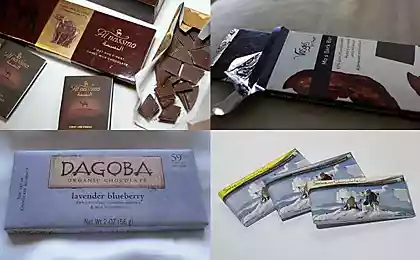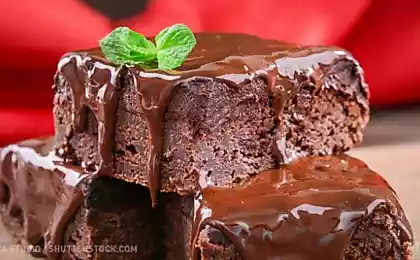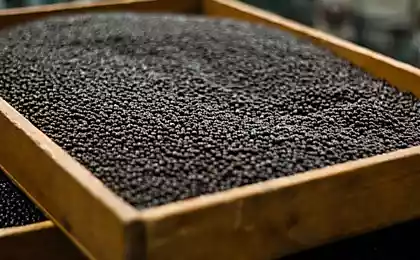945
African chocolate (11 photos)
Côte d'Ivoire (or Ivory Coast) - a small country in West Africa with a population of 20 million inhabitants - is the largest producer and exporter of cocoa beans in the world. Chocolate industry in this country has come under public scrutiny because of the exploitation of child labor - there was talk even about child slavery. However, the government says it has settled all problems.
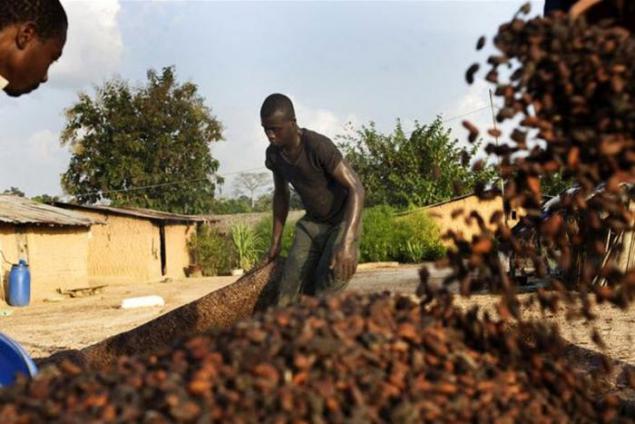
1. Boys split the fruit of the tree of chocolate while collecting cocoa farm in Cote d'Ivoire in February 2007. (Jessica Dimmock / VII Network)

2. Each year in the US sales of chocolate bring $ 13 billion. However, the origin of chocolate is not so charmingly as those sweets that will give you your favorite Valentine's Day. Cocoa beans are sweet and juicy fruit in a solid peel - fruit. Farmer knocks fruit from the tree, and then splits the peel with a large machete. Then the cocoa beans are separated from the pulp and left to dry, and then prepare to export. About 70% of chocolate around the world are brought from West Africa, about 40% of them - with a small plantations of Côte d'Ivoire. (Jessica Dimmock / VII Network)
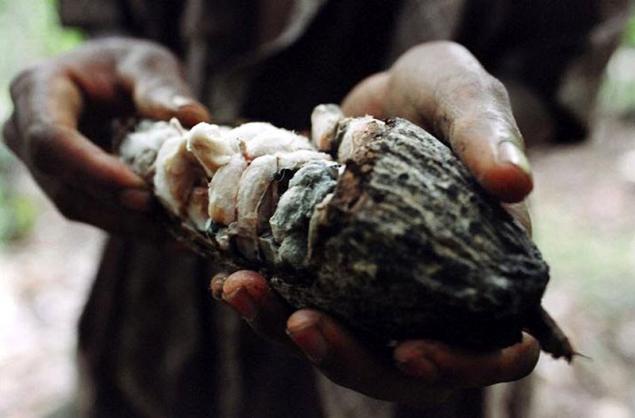
3. These shade-loving fruits grow in humid tropical zone in the southern part of the country. About 10 5 million people in Western Africa work small family plantations cocoa beans, which area is usually 7-12 acres. Workers go deep into the forest to buy cocoa beans from farmers and sell them to exporters. Often workers come here in such scrapes with a broken car. (Jessica Dimmock / VII Network)
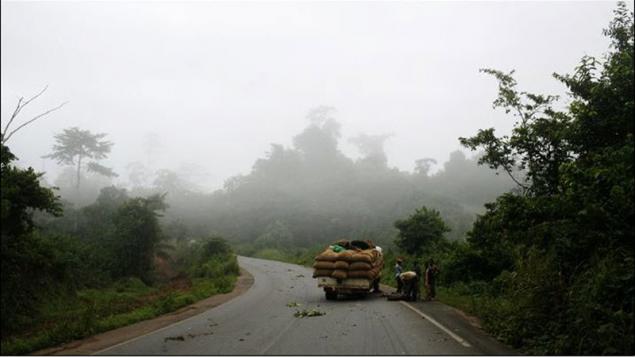
4.Lyudi go in Toui, Côte d'Ivoire, where there are several companies in the production of cocoa beans. Cocoa - one of the two main sources of income Côte d'Ivoire. Second - coffee, but this business is not very profitable, and the lives of farmers is not easy. In many villages there is no electricity, water, minimum sanitation and schools. Cocoa prices are rather sensitive to economic fluctuations, and Côte d'Ivoire farmers receive only 40% of the profits that rotates in London and New York. (Jessica Dimmock / VII Network)

5. Côte d'Ivoire has come under public scrutiny because of the exploitation of child labor. Many families can not afford to pay for school, so that instead of studying their children to work in the fields, waving machetes and all day dragging gravity. 11-year-old Traour Kassum shows scars on his legs, obtained while working in the field, where he was forced to work alone, but from which he escaped. He lives in a homeless shelter in the financial capital of Cote d'Ivoire - Abidjan. (Jessica Dimmock / VII Network)
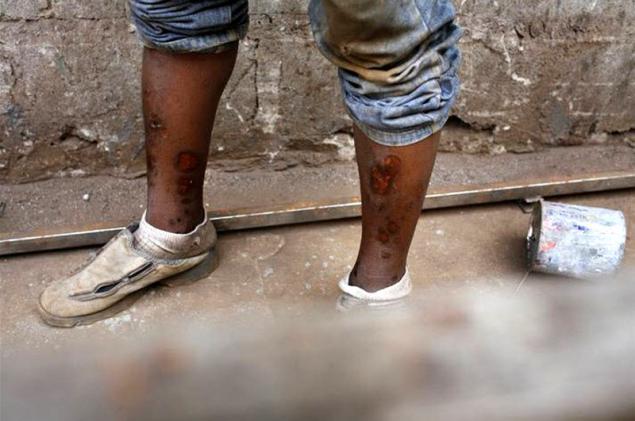
6.Zdanie company "Cargill" - one of the few large exporters in Côte d'Ivoire - behind high walls. In "Cargill" banned child labor - the official working age of 18 years. However, this law is ignored. Chocolate industry, governments and organizations for the protection of civil rights have created an international campaign aimed at solving the problem, but child labor continues to operate. Large companies like "Cargill" do not own plantations, so officially they do not hire workers. They just buy cocoa beans workers. Yet human rights activists say that the responsibility for improving working conditions is precisely at such companies. (Jessica Dimmock / VII Network)
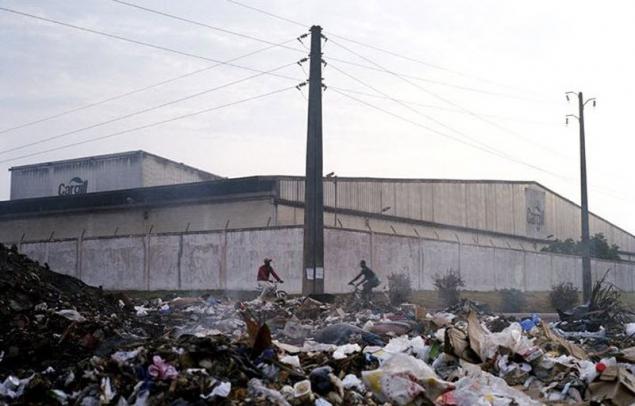
7. 17-year-old Dominic Komen stands in a homeless shelter in Abidjan, Côte d'Ivoire. He began work on cocoa plantations in 14 years, but resigned from the incredibly harsh conditions. The so-called "Cocoa Protocol", created in 2001, aims to ban child labor in the production, but many critics, including the International Trade Union says the opposite. According to reports in 2008, many children are still working on the plantations, and truancy are injured at work. (Jessica Dimmock / VII Network)

8. After collection of the cocoa beans, the pulp and the seeds left to dry in the sun for several days. Workers from Le Ssiri, Côte d'Ivoire, shake beans in a heap on the canvas to speed up the drying process and prepare for shipment. Every year the world produces about 3 million tons of cocoa - and nearly 1, 3 million of them - in Côte d'Ivoire. (Jessica Dimmock / VII Network)
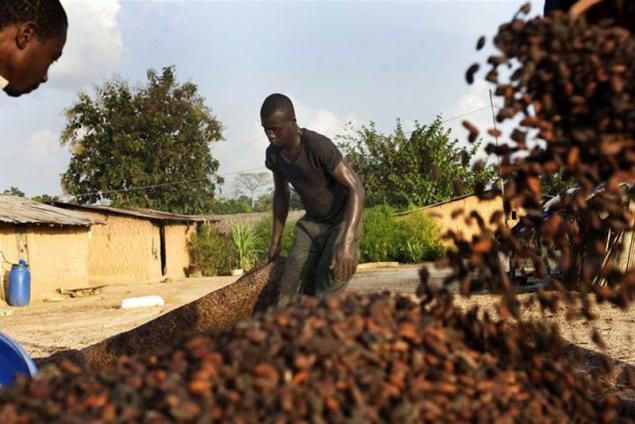
9. First cocoa passes through several stages of selection, and then sent to the 4 largest buyers-Côte d'Ivoire - the company "Saf-cocoa", "Cargill", "Archer Daniels Midland" and "Barry ranging." (Jessica Dimmock / VII Network)
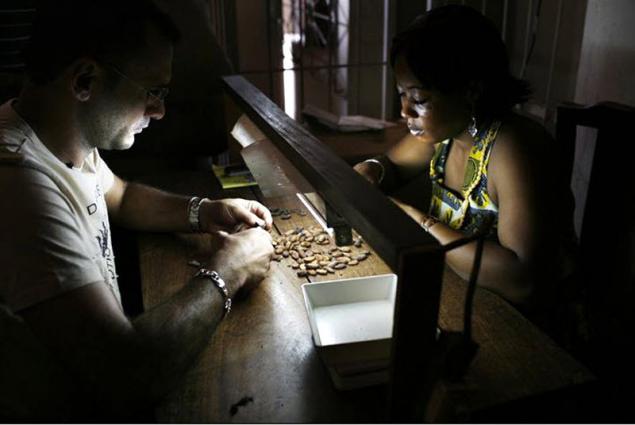
10. Boy sweeps scattered cocoa beans stock company "Saf-Cocoa" in San Pedro - one of the main centers of exports of Côte d'Ivoire. (Jessica Dimmock / VII Network)
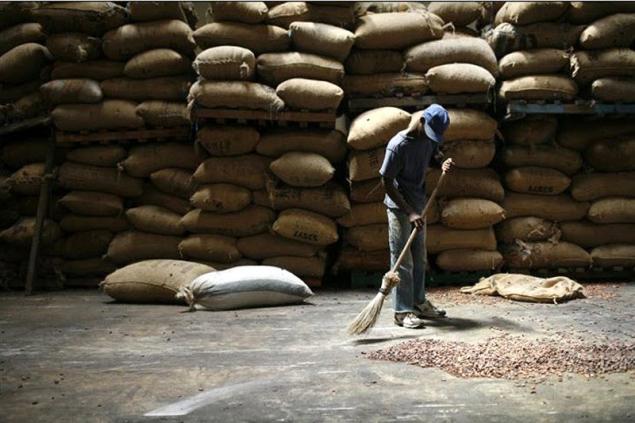

1. Boys split the fruit of the tree of chocolate while collecting cocoa farm in Cote d'Ivoire in February 2007. (Jessica Dimmock / VII Network)

2. Each year in the US sales of chocolate bring $ 13 billion. However, the origin of chocolate is not so charmingly as those sweets that will give you your favorite Valentine's Day. Cocoa beans are sweet and juicy fruit in a solid peel - fruit. Farmer knocks fruit from the tree, and then splits the peel with a large machete. Then the cocoa beans are separated from the pulp and left to dry, and then prepare to export. About 70% of chocolate around the world are brought from West Africa, about 40% of them - with a small plantations of Côte d'Ivoire. (Jessica Dimmock / VII Network)

3. These shade-loving fruits grow in humid tropical zone in the southern part of the country. About 10 5 million people in Western Africa work small family plantations cocoa beans, which area is usually 7-12 acres. Workers go deep into the forest to buy cocoa beans from farmers and sell them to exporters. Often workers come here in such scrapes with a broken car. (Jessica Dimmock / VII Network)

4.Lyudi go in Toui, Côte d'Ivoire, where there are several companies in the production of cocoa beans. Cocoa - one of the two main sources of income Côte d'Ivoire. Second - coffee, but this business is not very profitable, and the lives of farmers is not easy. In many villages there is no electricity, water, minimum sanitation and schools. Cocoa prices are rather sensitive to economic fluctuations, and Côte d'Ivoire farmers receive only 40% of the profits that rotates in London and New York. (Jessica Dimmock / VII Network)

5. Côte d'Ivoire has come under public scrutiny because of the exploitation of child labor. Many families can not afford to pay for school, so that instead of studying their children to work in the fields, waving machetes and all day dragging gravity. 11-year-old Traour Kassum shows scars on his legs, obtained while working in the field, where he was forced to work alone, but from which he escaped. He lives in a homeless shelter in the financial capital of Cote d'Ivoire - Abidjan. (Jessica Dimmock / VII Network)

6.Zdanie company "Cargill" - one of the few large exporters in Côte d'Ivoire - behind high walls. In "Cargill" banned child labor - the official working age of 18 years. However, this law is ignored. Chocolate industry, governments and organizations for the protection of civil rights have created an international campaign aimed at solving the problem, but child labor continues to operate. Large companies like "Cargill" do not own plantations, so officially they do not hire workers. They just buy cocoa beans workers. Yet human rights activists say that the responsibility for improving working conditions is precisely at such companies. (Jessica Dimmock / VII Network)

7. 17-year-old Dominic Komen stands in a homeless shelter in Abidjan, Côte d'Ivoire. He began work on cocoa plantations in 14 years, but resigned from the incredibly harsh conditions. The so-called "Cocoa Protocol", created in 2001, aims to ban child labor in the production, but many critics, including the International Trade Union says the opposite. According to reports in 2008, many children are still working on the plantations, and truancy are injured at work. (Jessica Dimmock / VII Network)

8. After collection of the cocoa beans, the pulp and the seeds left to dry in the sun for several days. Workers from Le Ssiri, Côte d'Ivoire, shake beans in a heap on the canvas to speed up the drying process and prepare for shipment. Every year the world produces about 3 million tons of cocoa - and nearly 1, 3 million of them - in Côte d'Ivoire. (Jessica Dimmock / VII Network)

9. First cocoa passes through several stages of selection, and then sent to the 4 largest buyers-Côte d'Ivoire - the company "Saf-cocoa", "Cargill", "Archer Daniels Midland" and "Barry ranging." (Jessica Dimmock / VII Network)

10. Boy sweeps scattered cocoa beans stock company "Saf-Cocoa" in San Pedro - one of the main centers of exports of Côte d'Ivoire. (Jessica Dimmock / VII Network)

